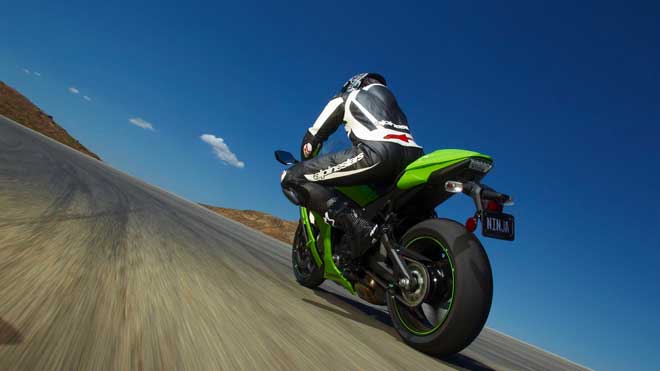That’s a click bait heading if ever I read one. Gotcha attention? Clickbait it may be, but there is also a degree of truth to my story, so let’s get on with it.
I’ve recently had a birthday and man it was ugly. 45. How the actual hell did that happen?
Seriously, I don’t feel like my own peception of what a 45 year old should feel. I get on my Grom in denial of my actual age, and I feel like a 16 year old back in my halcyon days. I get on the Postie Super Cub and immediately feel all the danger around me, but I don’t care… because I am being paid to ride.
And it got me to thinking, and look admittedly I’m not any kind of superstar rider but I gotta fess up and admit that I know what I know when it comes to riding. And out of those 45 years, 40 of them have been riding motorcyces and yet I have clearly managed to stay alive somehow.
The last 10 of those riding years at least have included daily commuting from the Western Suburbs of Melbourne to the Melbourne CBD and back Mon – Fri, so I must be either a) very lucky or b) doing something right.
But before we get to the hope of extending your life with motorcycles, I want to talk briefly about who this is for because while this isn’t a masterclass, it also isn’t for beginners. Here’s why.
Ever heard of the Four Stages of Competence?
They are a type of learning model used in pyschology that relate to the pyschological states involved in the process of progressing from knowing nothing about something to knowing quite a lot.
I’ve read and heard these four stages being used before in all kinds of manner related to learning and I believe that they can also be used in relation to motorcycling.
Here they are in some detail.
The four stages of competence*
– Unconscious incompetence
The individual does not understand or know how to do something and does not necessarily recognize the deficit. They may deny the usefulness of the skill. The individual must recognize their own incompetence, and the value of the new skill, before moving on to the next stage. The length of time an individual spends in this stage depends on the strength of the stimulus to learn.
– Conscious incompetence
Though the individual does not understand or know how to do something, they recognize the deficit, as well as the value of a new skill in addressing the deficit. The making of mistakes can be integral to the learning process at this stage.
– Conscious competence
The individual understands or knows how to do something. However, demonstrating the skill or knowledge requires concentration. It may be broken down into steps, and there is heavy conscious involvement in executing the new skill.
– Unconscious competence
The individual has had so much practice with a skill that it has become “second nature” and can be performed easily. As a result, the skill can be performed while executing another task. The individual may be able to teach it to others, depending upon how and when it was learned.
Source: Wikipedia – The four stages of competence
Here is my direct translation to the world of motorcycling.
The Four Stages of Motocycling Competence
1. Unconscious incompetence
You want to ride motocycles yet you don’t really know how. You don’t have the motorskills to manipulate a clutch in concert with a gearbox or the coordination to time your acceleration with your gear changes. You recognise you don’t have the balance to be able to sit on a motorcycle and balance it with just one foot touching down.
You crave to know how to do these things and the length of time it takes here to move into the next stage depends on the power of your desire to do so.
You can’t really ride a bike yet.
2. Conscious incompetence
You know the basics of how to operate a motorcycle and how to coordinate the controls with the balance required to pilot a machine in a confined space where it isn’t dangerous to you or others.
Yet you are allowed to ride on the road as long as you adorn yourself in fluorescent yellow hi-viz clothing and slap a ridiculous Yellow Learner’s plate onto your motorcycle somewhere effectively labelling yourself as a danger to society. Everyone else looks at you in pity or with concern for yours and their safety.
Every action you take while riding you have to think about really hard and execute independently of the next. You stall at the lights often and usually approach them with both feet out to balance yourself.
You may think you can ride, but you can’t.
You are consciouly incompetent.
3. Conscious competence
You’ve been riding for some time now and you have worked out how to ride without stalling, you can cleanly get away at the lights and drag the Prius next to you succesfully.
You understand the steps it takes to coordinate your clutch with your throttle and your hand and foot breaks and you can most likely accelerate hard enough to do a power stand up if you really think about it.
Every single thing you do you are still concentrating on but you can actually manage to multitask these things well enough together to be accepted as a licensed rider on public roads and quite possibly the first thing you did once those horrifying restrictions were lifted was to buy a liter bike, and it is quite possible that in the following months you may kill yourself accidentally applying too much power in the wrong situation without fully understanding your conscious competence…
You can ride, but you’re not as good as you think you are.
You are consciously competent.
4. Unconscious comptence
It’s been some twenty oe thirty years riding on public roads and somewhere along the way you decided to take up freestyle MX or Motocross so you’ve spent hundreds of hours on the dirt and done thousands of kilometres on the open road touring, including some riding overseas where they ride on the oppositie side of the road to you.
Track days have come and gone and you now are so familiar with how to ride a motorcycle you can get on any two wheeled machine and confidently and easily ride it regardless of size or horsepower.
You are so proficient with the throttle and clutch manipulation that you can quick shift gears without using your clutch.
You understand the concepts of leaning off to one side, dropping an elbow or counter steering from all the track days and you can get a knee down if you are in your leathers, but you prefer to sit upright riding a big twin with loads of torque and are quite happy to let the Power Rangers do that in public these days, confident in your own knowledge of riding that you could smoke any one of them if you wished it so.
You can ride a motorbike pretty well. You’re no Valentino even if you think you are, but you’re good enough to be able to think about something else at the same time as you operate your bike without crashing. You are unconsciously competent.
Now with that in mind my disclaimer here is that these tips are probably better left for people in stages three and four. No point trying to overwhelm yourself if you are still just at stage two and trying to work out how to stop without looking like a pelican.
1. Look (Ahead)
Of course you are looking ahead when you are riding, but how far do you look? 10 metres in front of you? 50? Further?
When I look ahead I am trying to look at least 1km or 1,000 metres (3,280 feet) ahead of me. As far as the eye can see. Really look.
Scan the surroundings, I look for birds that might have been disturbed in the trees , that’s a good sign something has happened to disturb them. Scan for dust plumes if you’re riding on unsurfaced roads with blind corners – think about what made that plume possible? A 4WD ahead coming your way maybe?
Look for smoke, is something burning ahead? Is that a problem? That glint in the road, is it water, or hot bitumen? How fast are you going for that corner and are you in the right gear looking as far ahead as you can?
What is coming up in general? Where is the next corner, what kind of road surface is ahead, whats the camber on that like?
LOOK.
It’s much more than just 6 feet in front of you. They say you go where you look and with motorcycling this is very true.
Look where you want to go everytime, but also look for signs of what lay ahead further than that, survey your surroundings – it could give you the signal to slow down or change course or just be prepared and in the right gear for that next awesome twistie bit.
2. Observe (Around You)
Sounds a lot like Look, but Observe is a different set of skills to practise.
I observe what is ‘going on’ around me.
Especially on the Postie and in Peak Hour traffic. See that douche bag in a cage on his phone? He hasn’t seen you. Likely he won’t either and ”cause he is texting his Mrs, you better steer well clear of him because most likely he is going to be checking his phone constantly while he types that message. Blind, he may as well be blind to you.
Observe people on the footpaths, man they do stupid things. Jump in front of you, get stung by a bee, see a dog and take a fright, all sorts of shit goes wrong and if you observe them you are likely going to be one step ahead of the third point.
Observing your surroundings gives you all sorts of signals for what lay ahead and what you may need to be prepared for next. Observe everything and get ready for the next unknown thing to happen and be ready for it.
3. Anticipate (What Happens Next)
Anticipation. What do you think is going to happen next? Is that car going to pull in front, did they even see you or is that person on the footpath likely to change direction wiithout warning because they are swiping right on Tindr while wearing headphones, so they definitely didnt hear you?
Anticipate is also a tricky one because by no means do I mean hesitate. Hesitation causes accidents, so I want to be clear there is a real difference between anticipation and hesitation. Anticipation is about trying to figure out what happens next in conjuction with what you have seen (look) and observed (observe) giving you key information points to take into consideration while you manouvre your machine down the road.
Hesitation is a pause while you consider your options. No time for that on two wheels.
Is that car going to pull out, or is he turning left even though he indicates right? Trying to anticipate largely what car drivers do next has saved me from many a incident. Be in the right gear, stay at the right distance, stay at the ready to use any or all parts of your motorcycle mechanics at once in an emergency stop situation.
It could be the difference between riding tomorrow or a lengthy stay in the ER.
Ain’t nobody got time for that.
And that’s about it folks, if you enjoyed my post please use the buttons below to share it with your friends or leave me a comment below.
Until next time, stay upright.






